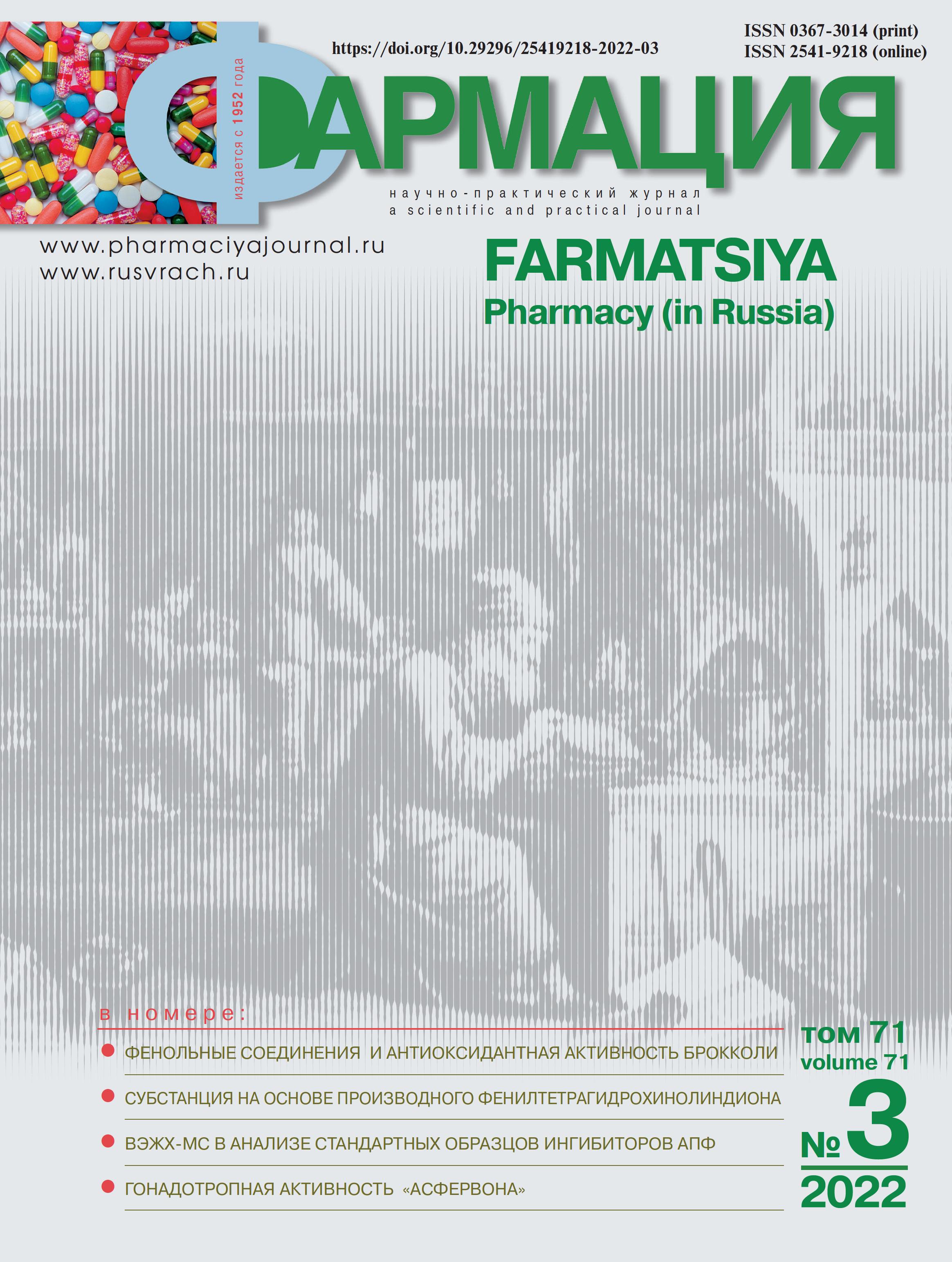Determination of water absorption coefficients for some medicinal plant raw materials
- Authors: Kamaeva S.S.1, Merkureva G.Y.1, Safiullin R.S.1, Merkureva D.Y.1, Zakirova G.I.1
-
Affiliations:
- Kazan State Medical University
- Issue: Vol 71, No 3 (2022)
- Pages: 29-33
- Section: Articles
- URL: https://journals.eco-vector.com/0367-3014/article/view/113705
- DOI: https://doi.org/10.29296/25419218-2022-03-05
- ID: 113705
Cite item
Abstract
Introduction. One of the key points in the manufacture of aqueous extracts (infusions and decoctions) is the volume of the extractant used for extraction. Since the dried medicinal plant raw material retains part of the water, it is necessary initially to take more water to obtain the required volume of water extraction, taking into account the water absorption coefficients. The values of the water absorption coefficients are given in the main regulatory document governing the manufacture of drugs in pharmacies - order of the Ministry of Health of the Russian Federation No.751n of 2015. However, in the order, the coefficients are given only for a limited range of medicinal plants. If there is no water absorption coefficient, the order gives recommendations to use the averaged values of the coefficients, which, of course, can lead to a mistakes in the volume and quality of water extracts. Objective: to establish the water absorption coefficients for some types of medicinal plant raw materials for their subsequent use in the manufacture of aqueous extracts in practical pharmacy, as well as in the educational process of educational institutions of the pharmaceutical profile. Material and methods. The objects of the study were Herba Poligoni avicularis, Herba Meliloti, Rhizomata et radices Inulae, Styli cum stigmatis Zeae maydis, Fructus Alni, Folia Betulae, Fructus Juniperi communis that meet the requirements of regulatory documents. Determination of water absorption coefficients was carried out in accordance with the methodology of General Pharmacopoeia Monograph 1.5.3.0012.15. Aqueous extracts were prepared in accordance with GPM.1.4.1.0018.15 “Infusions and decoctions”. Results. The water absorption coefficients were experimentally established for the Herba Poligoni avicularis, Herba Meliloti, Rhizomata et radices Inulae, Styli cum stigmatis Zeae maydis, Fructus Alni, Folia Betulae, Fructus Juniperi communis. It was proved that in the manufacture of water extracts, taking into account the established water absorption coefficients, the volume of the obtained water extraction fits into the norms of permissible deviations. Conclusion. For the studied medicinal plants, the water absorption coefficients were experimentally established, which allow to more correctly calculate the volume of the extractant when obtaining aqueous extracts.
Full Text
About the authors
Svetlana Sergeevna Kamaeva
Kazan State Medical University
Author for correspondence.
Email: farm64@bk.ru
Doctor of Pharmaceutical Sciences, Associate Professor of the Institute of Pharmacy
Galina Yurievna Merkureva
Kazan State Medical University
Email: g.merkureva@kazangmu.ru
Associate Professor of the Institute of Pharmacy
Rustem Safiullovich Safiullin
Kazan State Medical University
Email: 2367492@mail.ru
Doctor of Pharmaceutical Sciences, Professor, Professor of the Institute of Pharmacy
Diana Yurievna Merkureva
Kazan State Medical University
Email: dianamerkureva@mail.ru
Student of the Institute of Pharmacy
Gelusa Ildarovna Zakirova
Kazan State Medical University
Email: gelusa.zakirova.1999@mail.ru
Student of the Institute of Pharmacy
References
- Самылина И.А., Сорокина А.А., Молчан Н.В., Рудакова И.П. Коэффициенты водопоглощения и набухания лекарственного растительного сырья. Фармация. 2012; 4: 3-5.
- Определение коэффициента водопоглощения и расходного коэффициента лекарственного растительного сырья: ОФС.1.5.3.0012.15. Издание XIVФармакопея.рф [Электронный ресурс]. URL: https://docs.rucml.ru/feml/pharma/v14/vol2/587/(дата обращения 11.08.2021).
- Об утверждении правил изготовления и отпуска лекарственных препаратов для медицинского применения аптечными организациями, индивидуальными предпринимателями, имеющими лицензию на фармацевтическую деятельность. Приказ МЗ РФ № 751н от 26.10.2015.
- Горовой П.Г., Балышев М.Б. Возможности и перспективы использования лекарственных растений Российского Дальнего Востока. Тихоокеанский медицинский журнал. 2017; 3: 5-14. DOI: https://doi.org/10.17238/PmJ1609-1175.20173.5-14
- Гусев Н.Ф., Немерешина О.Н., Филиппова А.В. Лекарственные растения Башкирского предуралья. Астраханский вестник экологического образования. 2019; 1 (49): 179-89.
- Чудновская Г.В. Систематическая структура лекарственной флоры Восточного Забайкалья. Вестник Оренбургского государственного педагогического университета. Электронный научный журнал. 2015; 4 (16): 38-48.
- Ким М.Б., Мурзагулова К.Б., Бвсеева С.Б. Возможности использования природного сырья в составе вспомогательной терапии туберкулеза: опыт народной медицины, современное состояние исследований. Фармацияифармакология. 2017; 5 (5): 404-21.
- Gahramanova M., Rudyk M., Skivka L. The use of herbal remedies in the treatment of hepatobiliary diseases: trends and prospects. Biotechnologiaacta. 2019; 12 (5): 42-61.
- Фармакопея. Издание XIV. Том IV. Биологические лекарственные препараты. Растительное сырье и препараты. Гомеопатические фармацевтические субстанции [Электронный ресурс]. URL: https://docs.rucml.ru/feml/pharma/v14/vol4/647/(дата обращения 17.12.2021).
- Настои и отвары: ОФС.1.4.1.0018.15. Фармакопея. Издание XIV. Том II; 1962.Фармакопея.рф [Электронный ресурс]. - URL: https://docs.rucml.ru/feml/pharma/v14/vol2/147/(дата обращения 11.08.2021).
Supplementary files








